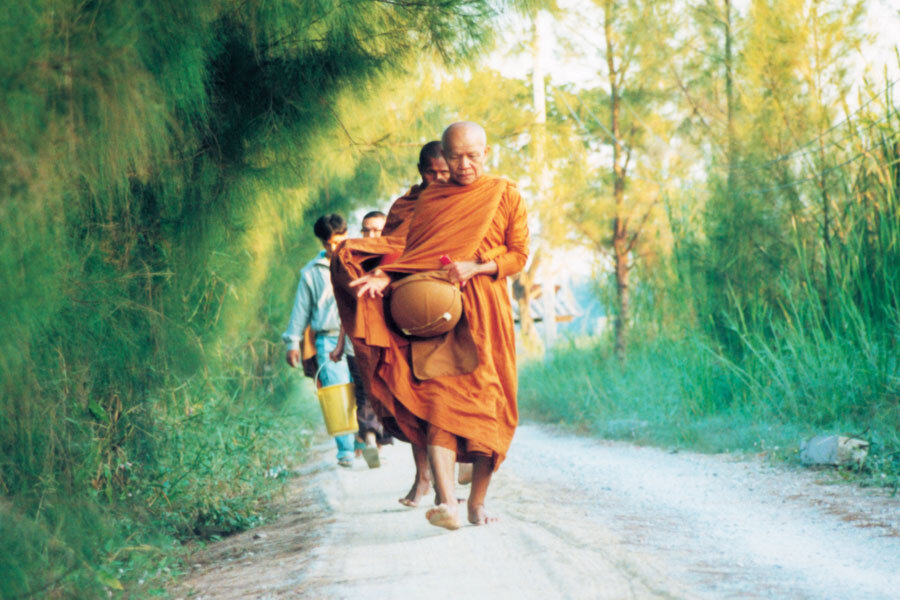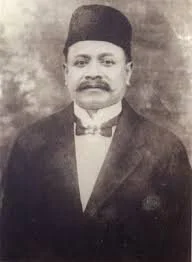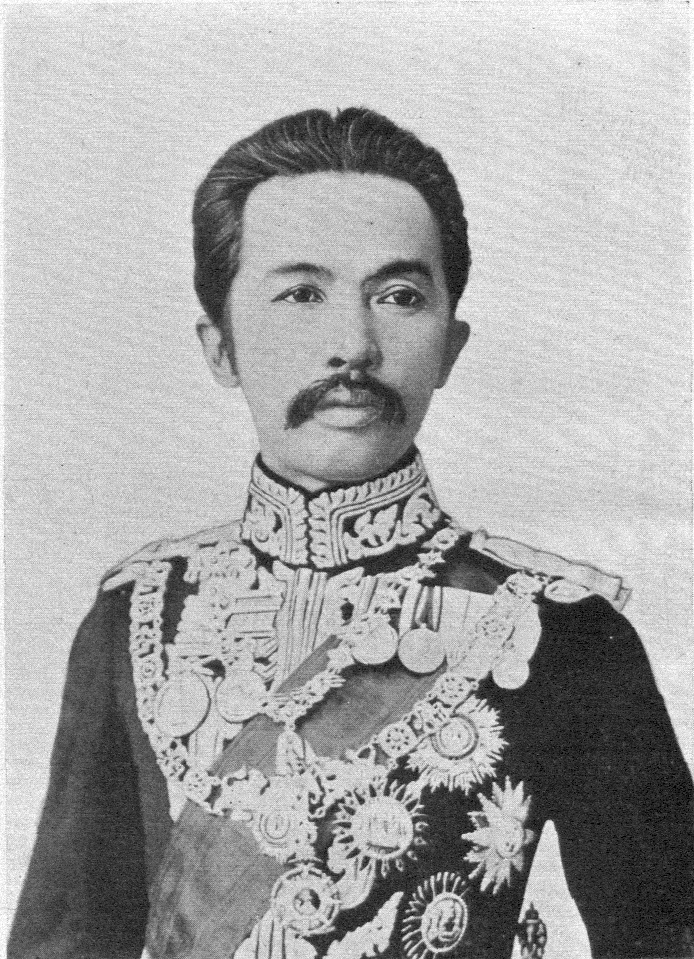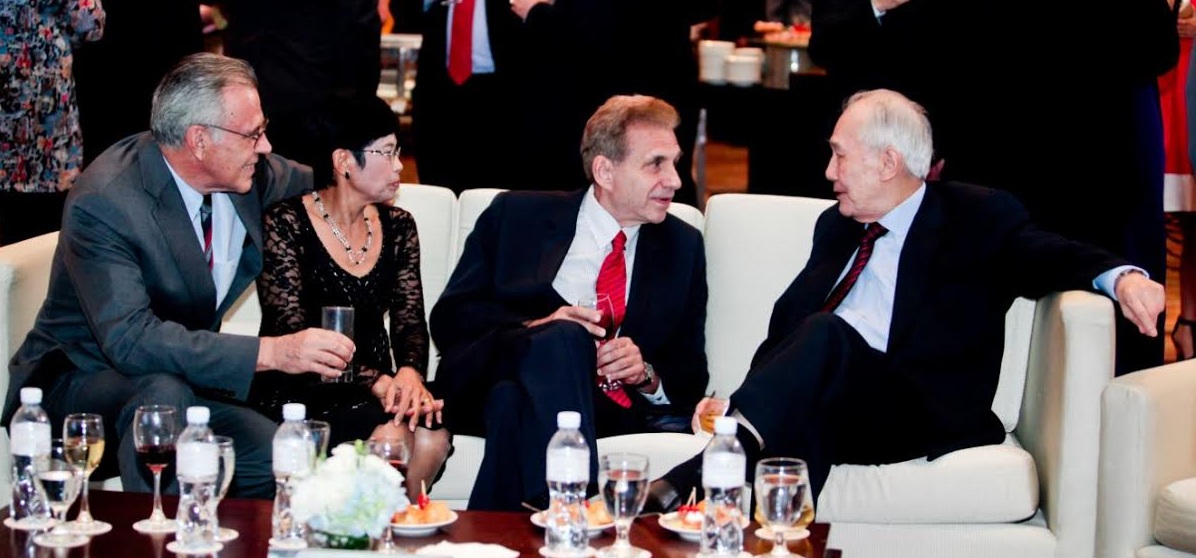Individual donations can be made via Kasikorn Bank account Silom Branch Office, account name "Thai Red Cross for Disaster", Account Type "Current Account" No. 001-1-34567-0. You can also donate in person at the "Donation Room" Office of Revenue Reduction, Thai Red Cross Society, Amnuay Noratham Building, 2nd Floor, Rama 4 Road, Pathumwan, Bangkok. For details on donations to the Red Cross, you can visit the Facebook page "Redcrossfundraising - Office of the Thai Red Cross Revenue Office". For more information about making donations to the “Pabuk Storm Victims Center Phuket Rajabhat University”, call 086-4780062, 093-5824897, 088-1687421 or 061-8680495 (available 24 hours).
Fiction
About eight months before the Pabuk storm struck, Yuangrat and I wrote several chapters of our historical novel about a storm hitting Pakpanang. Our account of the storm is imaginary, but based on Yuangrat’s experience of Tropical Storm Harriet in 1962 that killed over 900 people, mostly in Pakpanang. Our story is also based on my own two years in Pakpanang and experience of lesser storms. The novel is still at the first draft stage, but I thought it might be interesting for our readers to get an early glimpse of the story. The storm is a turning point in the novel. It wrecks a sailing ship in the gulf captained by one lead character and it impacts another, a teen-aged girl named Ploi, whose family runs a riverside gambling den in Pakpanang in 1899.
Here are two of those chapters about Ploi, who is competing with her older brother for her father’s attention and a place in the family business. We welcome any comments you may have.
Chapter 16 - Rising Waters
Ploi looked up from the accounts ledger as a powerful clap of thunder shook the tin-roofed gambling den. She looked into the main room were two dozen gamblers were intent on their games, barely noticing the growing storm. Four games were in progress. In one corner the fan tan players were hunched over their cards, eying each other warily. The biggest group of gamblers was around the Po Kam mat. Most were men, bare-chested and tense as the bowl of cowries was uncovered. Ploi looked at the Thua mat – that was the high-stakes game that generated most of their profits. The Thua dealer was counting out the cowries as the gamblers watched. Most of the Thua players were well-dressed. Women with a dozen bracelets, men with chains of gold, even a top-knotted little boy holding his mother’s hand. The district officer, his white official coat tossed to one side, had made a series of bets on the numbers two and three. A saw-oo player provided a piercing tune that lent a rhythm to the betting around the gambling mats, but failed to drown out the sounds of the storm. Smoke from a dozen cheroots chased around the room as the rising wind blew through the barred windows.
Located well off the main road to the provincial capital and with its own pier jutting out into the Pakpanang River, the Jaikla Casino – the Daring Casino – was one of the best known buildings in the district. It had one main gambling room, one private room and a room for records and accounts. The walls were rectangular wooden planks held together in a frame of dark teak wood. It was the only licensed gambling den in the district and generated a good portion of the income that Sia Leng, the monthon gambling tax concessionaire, sent on to the monthon office in Songkla.
It was Ploi’s job to ensure that there were credible records to show the Chinese concessionaire while ensuring the tax paid was as low as possible. Although only 16, she had become expert at shaving a few baht here and there from the income and adding a few baht here and there to the list of expenses. Once the job of her elder brother, she had taken over when the concessionaire had sent his thugs to threaten her father with broken thumbs if the casino continued to insult him with the meager payments. She knew the concessionaire knew she was cheating him, but she did it carefully and paid enough tax to keep him from feeling insulted. Ploi now had control of the casino finances – token exchange, payouts, accounts and tax payments. Elder Brother Chit was left with the job of keeping order on the gambling floor, handling the disputes that occasionally broke out and making sure the big bettors were happy. He seemed to enjoy that – chatting up the customers and offering free rice wine to the best customers. But now he was nowhere to be seen. Where is Older Brother? Ploi mouthed to the head dealer. He shrugged his shoulders. Ploi shrugged her shoulders in response. It didn’t matter. The casino ran just as well without him, though her father would never admit it.
“Do the best you can until Chit is able to get back,” he father would say. “Leave any serious problems for him to handle. Just don’t make things worse.”
Unlike many of her girlfriends, Ploi did not idolize her older brother. He was often carefully cruel to her, creating slights intended to let her know that however, much their father loved her, there was only one eldest son. He had mocked her quick ability to deal with numbers and her beautiful hand-writing.
“Why does a girl need write and calculate? You only need to warm some man’s bed and tend to his babies – that is, if anyone will have you.”
Ploi knew that Elder Brother Chit was the one behind the scorpions left in her bedding and the smelly stains that appeared on her best clothes. Chit would always give her a smirk to make sure she knew. Once she had complained to their father, but he said she was imagining it. After that she never complained again, but made sure her father could see that she, not her brother, was the reliable one, that she was the one devoted to the family business.
But it was not just his treatment of her that led Ploi to despise her brother. As she grew older, she saw that he was the slave of his own whims and urges – whether for liquor, for excitement or for women. She quickly realized that he was shallow, weak, ill-disciplined and lazy. She resented that her mother and father invariably made excuses for his failings. That leniency, she thought, only made him worse. He really thought he could get away with anything.
Ploi thought that his abandonment of the casino during the evening peak time would also be excused. Now, with the storm growing in intensity, she thought, perhaps they should close down so customers could get safely home. It might already be too late for those who had come by boat. Ploi quickly glanced out the door and saw wind-whipped waves surging over the dock. The river was rising rapidly and high tide was not for another three hours. It must be raining in the mountains to the west, swelling the streams feeding the river. At the same time, storms like this often sent a surge of water from the gulf into Pakpanang Bay. If the runoff, the storm surge and high tide all came together, she thought, there would be flooding.
A sudden crash reverberated through the room and stopped all the gambling. It must have been a dried palm frond smashing into the metal roof. Ploi straightened her pha sin and strode into the main room. The zinc roofing shifted and the wind whistled through the widening crack. Ploi made a quick decision and stepped to the center of the gambling room.
“We are going to have to close early because of the storm,” she announced.
An immediate cry of protest arose from many of the gamblers.
“I am on a winning streak.”
“I need to recoup my losses.”
“You can’t do that. Where is your father? Where is Kamnan Paen?”
Another branch hit the roof and the wind lifted one of the metal roofing sheets. Rain whipped into the front corner of the casino. Gamblers around the Po Kam mats grabbed their wagers and moved to the middle of the room.
“Who came by boat?” Ploi asked. “It is already too rough for you to go home that way.” Groans and protests went up from the group now huddling in the dripping room.
“Make sure your boats are well-secured. You will have to spend the night on this side of the river. I think we will all have to move to higher ground,” Ploi said. “Finish the current games and then pick up your betting counters. We will pay everyone immediately.”
Ploi issued quick orders to the dealers who rushed through the remaining games. They hastily picked up cowrie shells, collected the cards and rolled up the mats. Ploi started exchanging the bright-colored ceramic betting counters for dull coins when a cry arose as the wind rattled the roofing sheets and tore one off, letting the pellets of rain slant into the betting room. Ploi glanced through the door at the bettors scrambling to avoid the rain. She grabbed the account book she had been working on and strapped it around her waist. She picked up the lantern and the light picked out the frightened faces of the gamblers. She could feel the fear and panic radiating from them, but she felt strangely calm.
“Daeng, lock the cash box and bring it with you.”
The fan-tan dealer closed the lid on the wooden box when a gust of wind blew open the door. A wave of warm river water sloshed through the door and across the floor of the casino, sweeping gambling mats and betting counters with it. Several bettors screamed and rushed towards the door through the dark water already knee-deep and rising.
Chapter 18 – Swept Away
A sharp gust of wind slammed the casino door shut to more screams from the casino customers. Another gust whipped it open and left it quivering on its hinges. Ploi waded through the rising water and stepped down into the current sweeping past the river side of the building. She held up her lantern and waved to the group in the doorway to follow her. A quick glance towards the dock where the boats had been tied up showed nothing in the dim light from her lantern but white-capped waves. Ploi quickly turned to head up the slope from the river. The rain had churned the bank into a thick porridge of wet clay that grasped at her feet. She struggled up, pushed forward by the gale that swept in from the bay.
Behind her, the two workers carrying the casino counters and cash struggled to stay upright. A heavyset Chinese lady fell back into the mud and shrieked for help. The river was rising quickly and now swirled around the trapped woman. Ploi dropped her lantern and slid back down the bank to grab her arm. One of the workers took the other arm and they heaved her upright.
“Don’t leave me. I’ll drown,” she screamed.
“No one will leave you. We are all together. Just lift your foot straight up and then forward. Now the other one,” Ploi urged. A market lady got behind her and pushed. The ungainly group slowly moved up to get out of the water and onto firmer ground.
The glimmer of light from the casino flickered out. Ploi looked back at the casino and saw the river water tear off one of the wooden walls and then another. They hesitated a moment and then were seized by the water, disappearing into the darkness. As far as she could see in the darkness, there was nothing but wind-whipped waves and fast-moving water.
“Everyone keep moving this way,” Ploi yelled as she trudged forward. She couldn’t see more than a few feet ahead. All she knew was that they had to go uphill, angling across the slope and the water that wanted to pull them into the river. Ploi paused and waited for the group to catch up, but the older women kept slipping in the mud. She pulled the Thua mat from Daeng’s hands.
“Everyone take hold of the mat. We’ll pull you up,” she shouted.
Finally, the ground leveled off and the mud was not so deep. Ploi stopped the group on the higher ground that formed the road to the river side. Ploi stopped and counted as the group bent over in exhaustion. All 32 of the people at the casino had made it this far. Wet and cold, the survivors felt their way through the darkness to the main road to Nakhon. The heavy rain had flooded both sides of the road. It was now a long thin island. Two small houses near the road were dark and partly flooded.
“We’ll go to my house. It is the nearest,” Ploi said. The road of hard-baked laterite made much easier going, but the wind and the rain continued to assault them. Ploi was grateful when she saw the multiple roofs of her home emerge from the darkness. The large columns of takian wood held the multi-roofed house out of the water that streamed off the road and into the family compound. Yellow light leaked around the window shutters. Ploi wearily pulled herself up the steep teak stairway into the house and pounded on the door. She pounded again, but there was no response.
“Open the door,” she screamed. “It’s me.” She was rewarded with the sound of the iron bolts being withdrawn from the door. It swung open and Ploi staggered onto the central platform of the house and into the arms of Som, one of her father’s assistants.
“Where is father?” she asked. Som nodded to the reception hall on one side of the platform. Ploi opened the door and stepped over the raised door frame. She welcomed the warmth and light of the room. A dozen men sat around a long mat with bottles and glasses beside them. Several trays of prawn crackers lay between them. At the far end of the room, Kamnan Paen Looked up with a scowl.
“What are you doing back here so early? Where is your brother?”
“The storm. The river rose. The casino washed away,” Ploi said. She looked down and saw that she had lost her sandals somewhere. The other survivors pushed their way into the room and stood dripping.
“That is ridiculous,” Paen snorted.
“I almost died,” the Chinese woman wailed.
“The wind felt like a whipping with palm fronds.”
“Give me something to drink.”
“The river was wild. It just kept rising and rising with big waves.”
“Alright, alright,” Kamnan Paen roared. “Ploi, where is the money and where is your brother?”
Ploi looked back at Daeng and the two casino workers and they looked down at their empty hands.
“Where is the money?”
“We had it when we left the casino, but we had to pull people up the bank to escape the flood. The river was up to our waists and trying to pull us into the current. We had to leave some things behind. The cash box is big and heavy,” Ploi said, looking at Daeng, who hung his head. “It would have been dangerous to try to carry it through the water. The important thing is we managed to save everyone and, other than a few cuts and bruises, no one is seriously hurt.”
“But the money? What about the casino counters?”
“It was just one night’s take,” she said. “And I did save the accounts.” She pulled out the sodden account book she had strapped around her waist.
“You lost our money? How could you be so careless?” he screamed at his daughter.
Ploi’s eyes flashed with anger and she took two steps toward her father. “We saved everyone’s lives when they could have drowned. You were not there to help. Elder Brother Chit was not there to help.”
Paen took a step back in surprise that his daughter would yell back at him. “Well, where is your brother? He was in charge of the casino. If you had only waited for him — he wouldn’t have lost the money,” he said.
“Isn’t he here? He said he was not feeling well and was going home,” Ploi said.
“Would I ask if he was here? How could you forget your brother and save everyone else?” he demanded.
“But he wasn’t there. I don’t know where he is,” she said. “If we had waited for him, we all would have drowned.”
Daeng stood up. “Kamnan, sir, Ploi did everything possible to save everyone at the casino. Ai Chit left the casino long before the storm and we never saw him again.”
“We need to go back to the casino and find him,” Paen said.
“There is no one there, there is nothing left but the building posts,” Ploi said. “Chit has probably gone to one of his friends’ houses. You can’t see anything in the dark and rain.”
“He is my son. We need to find him,” Paen said. “Ong and Art, get some lanterns we’ll go out to search.”
Kamnan Paen and his men quickly headed out the door, letting another blast of rain and wind into the room. Ploi shook her head in silent disagreement, but quickly busied herself getting food and drink for the casino group. Her mother brought out sleeping mats and blankets for the group that lay exhausted on the floor. Many were quickly asleep.
Ploi, however, stayed awake listening to the storm. She thought about all she had done for her father, but he hadn’t said a word about her own survival or her efforts to save the casino customers. He cared only about the money and his son. What did she have to do to mean something? The only way was through the casino. She had to make it bigger and more profitable. Her father would notice that. She would earn the money to extend the house so her mother had another room for her Buddha images and her father could have a separate room to entertain his friends. There was much that could be done to attract more customers. With Pakpanang growing as a port and a trading center, they should be able to bring in much more money. That would keep the concessionaire off their backs and employ more people. Someday, Ploi thought, she would be an important person in the family and in the town. The storm lashing the house seemed to infuse her with energy for a moment as she thought of all the changes she would make. After what seemed like hours of fury, the whistle of the wind softened. Its high-pitched scream lowered into a moan. The sound of the rain lashing the thatched roof gradually faded. Ploi slipped into an exhausted sleep.
Two hours later, her father came back in, wet, cold and in despair. “We went to all his friends’ houses, but nothing.” He sat slumped in a corner and grabbed for one of the liquor bottles still on the floor.
“Father, I…
“Don’t talk to me now,” he grunted and drank from the bottle.
For the first time that night, tears welled in Ploi’s eyes as she watched her father take another drink, staring at the darkness beyond the door.
The thin grey light of a morose dawn filtered into the room, glinting off the bottle as it was raised and lowered, raised and lowered.











































